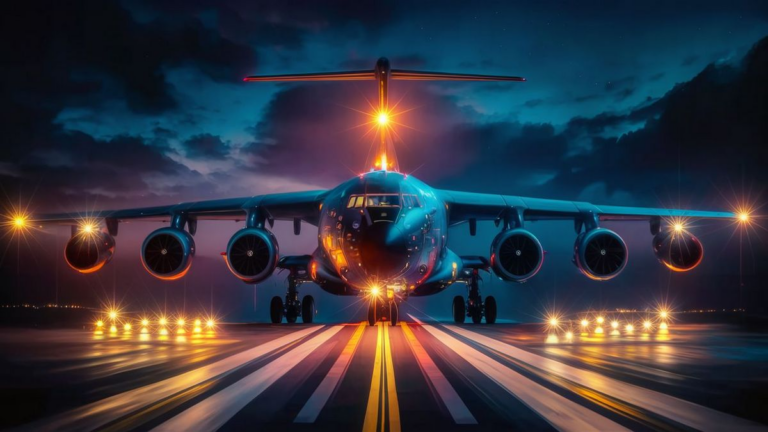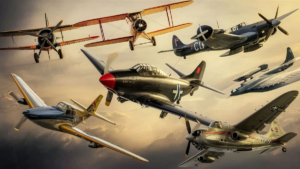When it comes to military aircraft operations at night, the significance of proper lighting cannot be overstated. Military aircraft lights serve a crucial role in ensuring safe and effective operations, both during combat missions and training exercises.
The Purpose of Military Aircraft Lights
Military aircraft utilize various types of lights for different purposes, all aimed at enhancing visibility and ensuring operational success. These lights serve multiple functions, including:
- Navigation: Lights help pilots navigate through the darkness, enabling them to identify landmarks, maintain course, and avoid collisions.
- Identification: Different colored lights signify various aspects of an aircraft, such as its position, direction of movement, and status.
- Communication: Lights are used to convey signals and messages to ground personnel, other aircraft, and allied forces.
- Stealth: In certain situations, military aircraft employ lighting strategies to minimize visibility and reduce the risk of detection by enemy forces.
Types of Lights Used
Military aircraft are equipped with a variety of lights designed to meet specific operational requirements. Some common types include:
| Light Type | Function |
|---|---|
| Position Lights | Indicate an aircraft’s position in the sky, typically colored red (port side), green (starboard side), and white (tail). |
| Anti-Collision Lights | Enhance aircraft visibility to prevent mid-air collisions, often flashing or pulsating in a distinctive pattern. |
| Landing Lights | Illuminate the runway during takeoff and landing operations, ensuring pilots have clear visibility in low-light conditions. |
| Formation Lights | Enable pilots to maintain formation and coordination during night flights, enhancing safety and situational awareness. |
Technological Advancements
Advancements in lighting technology have revolutionized military aviation, offering improved visibility, energy efficiency, and durability. LED lights, for example, have become increasingly prevalent due to their low power consumption and long lifespan.
Challenges and Considerations
Operating military aircraft at night presents unique challenges and considerations for pilots and ground crews alike. Some factors to consider include:
- Visibility limitations
- Weather conditions
- Enemy detection
- Training requirements
Military aircraft lights play a vital role in nighttime operations, ensuring safety, visibility, and mission success. As technology continues to advance, so too will the capabilities of these essential lighting systems, enabling military forces to operate effectively in even the most challenging environments.
Frequently Asked Questions
Here are some frequently asked questions regarding military aircraft lights:
- Are military aircraft lights visible from the ground?
Yes, military aircraft lights are designed to be visible from various distances and angles to ensure safety and communication during operations. - What role do formation lights serve?
Formation lights enable pilots to maintain proper formation and coordination during night flights, enhancing safety and situational awareness among the aircraft. - How do weather conditions affect the use of military aircraft lights?
Weather conditions such as fog, rain, or snow can reduce visibility and impact the effectiveness of aircraft lights. Pilots must adjust their use of lights accordingly to maintain safety. - Why are LED lights increasingly used in military aircraft?
LED lights offer several advantages, including low power consumption, durability, and long lifespan, making them ideal for military aviation where reliability is crucial.
Future Trends in Military Aircraft Lighting
Looking ahead, advancements in military aircraft lighting continue to evolve. Emerging technologies such as adaptive lighting systems and integrated sensor networks are being explored to further enhance operational capabilities and safety during night missions.
See also:






